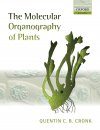![The Molecular Organography of Plants The Molecular Organography of Plants]()
Click to have a closer look
About this book
Contents
Customer reviews
Biography
Related titles
About this book
From the cells of aquatic algae to the majestic redwoods towering 100 metres above the California coast, the history of plant evolution has been one of increasing complexity. The underlying rationale for this book is to answer the question: How, when land plant embryos at a few-celled stage are essentially comparable, do plants achieve such radically different adult phenotypes, from mosses to tree-ferns, and grasses to oak trees?
The Molecular Organography of Plants chronicles the origin, and importance, of the complex plant organs that have allowed plants to shape the earth's biosphere, and seeks to explain why and how the genetic mechanisms governing these developmental trajectories have diverged so much. It provides a detailed account of the organs produced by land plants (stems, roots, leaves, seeds, flowers) into which is incorporated what is rapidly becoming known of the molecular mechanisms responsible. Plant organs are therefore discussed in the context of the evolution of development ("evo-devo"), and their basis in molecular developmental genetics is described. The result is a novel synthesis of classical morphology and molecular developmental biology that takes a broad look at the evolution of plant form.
Contents
Preface
1. Introduction
2. The Organography of Stems
3. The Organography of the Root
4. The Organography of the Leaf
5. Sporangium to Seed
6. Sporophyll to Flower
References
Customer Reviews
Biography
Quentin Cronk, UBC Botanical Garden and Centre for Plant Research, University of British Columbia, Canada
By: Quentin C.B Cronk
259 pages, Figs, col plates, tabs
In this book, Quentin C.B. Cronk admirably attempts to bring together a spectrum of scientific approaches. The book is a detailed compendium of the current status of plant organography from morphological, evolutionary, and developmental genetic perspectives. Integrative and Comparative Biology Cronk's excellent book is timely, scholarly and important, bringing together the evolution, anatomy and morphology of the major plant organs and how they develop...I would recommend this book to all botanists who need bringing up to date in this fast-moving area of research. It is an enjoyable read and excellent value at the price. J.R Barnett, Annals of Botany




































